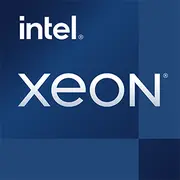Intel Xeon E3-1535M v6

インテル Xeon E3-1535M v6: ハイブリッドワーク時代のプロフェッショナル向けプロセッサ
はじめに
2025年、モバイルワークステーションはエンジニア、デザイナー、IT専門家にとって重要なツールであり続けています。2017年に発表されたインテルXeon E3-1535M v6プロセッサは、今でも中古デバイスや一部のニッチな新しいノートパソコンに出回っています。年数が経っても、ユニークな特性によりその relevancceは保たれています。今、このCPUが誰に、そしてなぜ必要とされているのかを見ていきましょう。
1. アーキテクチャとプロセス技術: Kaby Lakeの遺産
コードネームとプロセス技術
このプロセッサは、Kaby Lake(第7世代インテルコア)アーキテクチャを基にした14nmプロセス技術で構築されています。これはインテルが10nmに移行する直前の最後の世代であり、そのため最適化はされているものの革命的ではない構造です。
コア、スレッド、周波数
- 4コア/8スレッド(Hyper-Threadingのおかげ)。
- ベースクロック: 3.1 GHz、Turbo Boost時の最大値は4.2 GHz(1コアあたり)。
- L3キャッシュ: 8MB。
統合グラフィックス
内蔵GPUはインテルHDグラフィックスP630で、ベースクロックは350 MHz、ピークは1.1 GHzです。ワークステーション用に特化されたこのソリューションは、以下をサポートしています:
- DisplayPort/HDMI経由の4Kディスプレイ;
- OpenCL 2.0、DirectX 12に対応;
- ビデオエンコード用のQuick Sync技術。
アーキテクチャの特徴
- ECCメモリのサポート — 高負荷のRAMタスク(例えば、CADモデリング)には不可欠。
- 企業のセキュリティのためのvProおよびTrusted Execution技術。
2. 消費電力とTDP: パワーと効率のバランス
プロセッサのTDPは45Wで、モバイルワークステーションには一般的です。しかし、2025年には、Apple M3 Pro(TDP 30W)などの現代のチップと比較すると、この数値は高く見えます。
ユーザーにとって何を意味するか?
- このCPUを搭載したノートパソコンは、強力な冷却システムを必要とします。
- スリープモード時の消費電力は、5-7Wに低下します(SpeedStep技術のおかげ)。
- ピーク負荷時(レンダリング、コードのコンパイル)には、薄型ボディでは過熱の可能性があります。
3. パフォーマンス: 数字と実際のタスク
Geekbench 6: シングルコア 1191 / マルチコア 3703
比較のために:
- インテルCore i7-1260P(2022): ~1800(シングル)、~8500(マルチ)。
- Apple M2(2023): ~2600(シングル)、~10000(マルチ)。
使用シナリオ:
- オフィスタスク: 書類作成、ブラウザ(20以上のタブ)、Zoom — プロセッサは遅延なく処理。
- マルチメディア: DaVinci Resolveでの4Kビデオ編集 — レンダリングにi7-12700Hより30%多く時間がかかります。
- ゲーム: 2025年のゲーム(低設定)ではFPSは約25-35(例えば、FSR 3.0を使用した_Cyberpunk 2077_)。HD P630は現代のiGPU AMD Ryzen 7 8840HSよりも4倍弱いです。
- ターボモード: 短時間のタスク(アプリの起動、PDFのエクスポート)ではクロック周波数が4.2GHzに上がりますが、長時間の負荷下では過熱により3.5 GHzに低下します。
4. 使用シナリオ: Xeon E3-1535M v6は誰に適しているか?
- エンジニアと建築家: CADプログラム(AutoCAD、SolidWorks)でのECCメモリサポートと安定性。
- IT専門家: 仮想化(VMware、VirtualBox)およびコードのコンパイル。
- 写真家とデザイナー: 大きなファイルを扱うAdobe LightroomやPhotoshopでの作業。
適さない点:
- ゲーマーには — 弱いグラフィックス。
- 自律性を重視するユーザーには — 高いTDPが稼働時間を短縮。
5. 自律性: パフォーマンスの代償
TDPが45Wのため、このプロセッサを搭載したノートパソコンは、軽い負荷時(ウェブサーフィン、オフィス)で4-5時間以上稼働することはまれです。
省エネ技術:
- インテルSpeed Shift: 消費電力を低下させるための動的な周波数変更。
- Cステート: 未使用コアの無効化。
アドバイス: バッテリー容量が90Wh以上のデバイス(例:Dell Precision 7520)を見つけると、自律性が6時間まで延びます。
6. 競合との比較
インテルCore i7-7820HQ(2017):
- 類似のパフォーマンスですが、ECCサポートはありません。
AMD Ryzen 7 PRO 5850U(2021):
- 8コア/16スレッド、TDP 15W。
- Geekbench 6でのマルチコア: ~7500。
Apple M1(2020):
- シングルコア — ~2300、マルチコア — ~8300。
- 3倍のエネルギー効率です。
結論: Xeon E3-1535M v6は、パフォーマンスと効率の面で現代の同類には劣りますが、安定性とECCサポートでは優位性があります。
7. メリットとデメリット
強み:
- 信頼性とECCサポート。
- 単一スレッドタスクでの良好なパフォーマンス。
- プロフェッショナルソフトウェアとの互換性。
弱み:
- 高いエネルギー消費。
- 古いグラフィックス。
- 新しいノートパソコンでの入手可能性が限られている(2024-2025年モデルの価格は1,500ドルから、例:Lenovo ThinkPad P51s)。
8. ノートパソコン選びの推奨
デバイスタイプ:
- モバイルワークステーション: Dell Precision 7520、HP ZBook 15 G4。
- 産業用ノートパソコン: Panasonic Toughbook 55。
注意すべき点:
- 冷却: 2つのファンと銅製ヒートパイプ。
- メモリ: ECC付き32GB DDR4以上。
- ディスプレイ: プロ向けの4K IPS。
2025年の価格:
- このプロセッサを搭載した新しいノートパソコンは、基本構成で1,500ドルからスタート。
- Ryzen 7 PRO 6850Uの類似品は、自律性が優れており1,200ドルから。
9. 最終結論: Xeon E3-1535M v6は誰に適しているか?
このプロセッサは、安定性と正確性が重要な方に適しており、ピークパフォーマンスを求める方には少し物足りないかもしれません。以下のような方に理想的です:
- ワークステーションを更新する企業ユーザー。
- ECCを必要とする古いプロフェッショナルソフトウェアを使用する専門家。
代替案: ECCが不要な場合は、Ryzen 7 PROまたはApple Siliconをベースにしたノートパソコンを検討してください。それらはパフォーマンスと自律性のベストバランスを提供します。
結論
インテル Xeon E3-1535M v6は、信頼性を重視するプロフェッショナル向けのニッチなソリューションです。2025年には、特定の要件がある場合にのみ選ぶべきで、その他のケースでは最新の同類製品に目を向ける方が良いでしょう。
基本
CPUの仕様
メモリ仕様
GPUの仕様
その他
ベンチマーク
他のCPUとの比較
ソーシャルメディアで共有する
または当サイトへのリンクを追加
<a href="https://cputronic.com/ja/cpu/intel-xeon-e3-1535m-v6" target="_blank">Intel Xeon E3-1535M v6</a>